Michelangelo’s Hidden Secrets Under The Medici Chapel
Ellen Lloyd - AncientPages.com - The European Renaissance period spanned between the 14th and 17th centuries. It was a fascinating moment in the history of the European continent. Western civilization was transformed, and great artists were born, but there were also frequent struggles between the Catholic Church, artists, scientists, kings, queens, and those with power and money.
Left: The dome of the Cappella dei Principi dominates the San Lorenzo architectural complex. Credit: Public Domain; Right: Portrait of Michelangelo by Daniele da Volterra. Credit: Public Domain
Being a talented artist had its advantages and disadvantages. One man whose works were praised on some occasions, only to be questioned later, was the great painter Michelangelo (1475 – 1564).
Famous for his beautiful frescoes, Michelangelo painted the Sistine Chapel’s ceiling between 1508 and 1512. This Renaissance masterpiece is one of Michelangelo's most famous works. Some researchers who studied this work of art suggest Michelangelo was hiding secret messages in the ceiling of the Sistine Chapel.
Michelangelo was also said to have inserted hidden Pagan symbols associated with female anatomy in his famous Medici Chapel work.
The Medici were powerful Renaissance Godfathers, patrons of the Church, and many artists. Being a very rich family, they obtained control over much of Florence. During their time, there was a vague distinction between science and magic. Many famous scientists were very interested in the occult, and the Church was annoyed.
The Catholic Church was constantly questioned and struggled to remain powerful. Although the Medici family were patrons of the famous Galileo Galilei, they could not protect him from being arrested.
Catherine de Medici shared her family’s great love for art. She was also interested in astronomy, astrology, architecture and there were rumors she was fascinated with occult knowledge. She was a great supporter of Nostradamus (1503 – 1566). As a devout Catholic, Nostradamus drew heavily on Biblical allusions and prophecies. Nostradamus maintained a good relationship with the Church, but Michelangelo was not so lucky.
The Medici Chapel in Florence, Italy, where Michelangelo worked on the New Sacristy upon the request of Cardinal Giulio de Medici, the future Pope Clemens VII, was intended to serve as a mausoleum for the Medici family.
Only much later did we discover that the building also became a hiding place for some of his works.
In 1529, Michelangelo joined many inhabitants in Florence who had grown tired of the dominant Medici family and the Pope. Questioning the Church and the Medici family, who Michelangelo depended on as an artist, was not wise. Still, he was hoping for a more democratic system of governance.
Pope Clement VII, who was a Medici, was displeased with Michelangelo, who at the time was working to help fortify the city walls against Medici-friendly forces led by the Pope himself. It took ten months for the Pope and the Medici family to win the battle against their enemies, who were punished immediately. When the Florentine Republic fell in August, the troops were told to arrest Michelangelo and lock him in the Bargello, then the city prison.
Three months before the end of the conflict, Michelangelo managed to find a hiding place so he was never punished for his uprising against the Italian authorities.
A 19th-century photograph of the interior of the Cappella dei Principi - Credit: Public Domain
In November 1530, the Pope and the Medici family announced Michelangelo could return and finish his work on the Chapel. They promised he wouldn’t be punished. Michelangelo emerged from his hiding place and was once again on good terms with the Medici family.
But where had he been hiding all those months? Michelangelo’s hiding place had remained a secret for almost 500 years. Most thought the great artist sought refuge in a church tower or stayed with a friend.
However, this was not the case. Ironically, Michelangelo decided to hide where no one expected to find him; in the Medici Chapel!
In 1976 the director of the Museum of the Medici Chapel discovered a very small secret room where the walls were covered with 180 unknown sketches.
It soon became clear that Michelangelo, one of the greatest Renaissance artists, spent three months sitting in the darkness with nothing to do except create sketches using charcoal and sienna red crayon.
Many of Michelangelo’s drawings are larger than life-size.
The room where Michelangelo spent his three months is today rarely opened. Occasionally it's possible to visit it but keep in mind the place is so small that only 12 people are allowed in every half hour.
Updated on April 8, 2023
Written by Ellen Lloyd – AncientPages.com
Copyright © AncientPages.com All rights reserved. This material may not be published, broadcast, rewritten or redistributed in whole or part without the express written permission of AncientPages.com
Expand for referencesMore From Ancient Pages
-
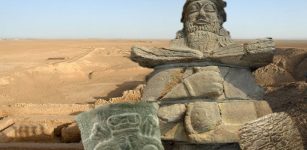 Enmerkar: Legendary Sumerian Founder And Ruler Of Uruk And Grandson Of God Utu
Featured Stories | Mar 23, 2020
Enmerkar: Legendary Sumerian Founder And Ruler Of Uruk And Grandson Of God Utu
Featured Stories | Mar 23, 2020 -
 Llangernyw Yew: Chilling Prophecy Of The Oldest Tree In Wales
Featured Stories | Oct 28, 2022
Llangernyw Yew: Chilling Prophecy Of The Oldest Tree In Wales
Featured Stories | Oct 28, 2022 -
 Nurarihyon: Powerful Demon Of Obscure Origin, Chief Of All Yokai
Featured Stories | Nov 6, 2024
Nurarihyon: Powerful Demon Of Obscure Origin, Chief Of All Yokai
Featured Stories | Nov 6, 2024 -
 Odd Encounter With A Mysterious Cave-Dwelling Creature Who Issued A Warning Described In A Norse Saga
Featured Stories | Feb 27, 2025
Odd Encounter With A Mysterious Cave-Dwelling Creature Who Issued A Warning Described In A Norse Saga
Featured Stories | Feb 27, 2025 -
 10 Remarkable Jain Temples – Marvelous Ancient Architecture And Stone Carvings
Featured Stories | Dec 17, 2015
10 Remarkable Jain Temples – Marvelous Ancient Architecture And Stone Carvings
Featured Stories | Dec 17, 2015 -
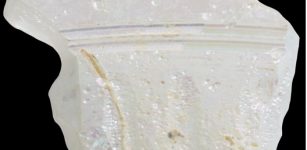 New Method Distinguishes Between Egyptian And Palestinian Glass During Roman Times
Archaeology | Jul 13, 2020
New Method Distinguishes Between Egyptian And Palestinian Glass During Roman Times
Archaeology | Jul 13, 2020 -
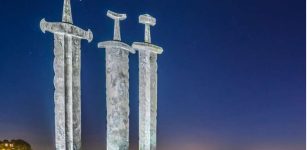 Sverd I Fjell – Swords In Rock: Battle Of Hafrsfjord Won By Harald Fairhair – First King Of Norway
Featured Stories | Mar 9, 2016
Sverd I Fjell – Swords In Rock: Battle Of Hafrsfjord Won By Harald Fairhair – First King Of Norway
Featured Stories | Mar 9, 2016 -
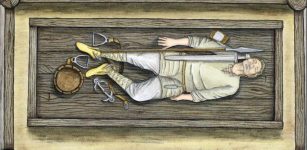 Magnificent Chamber Graves Of Four Scandinavian Warriors Discovered In Poland – The Piast Dynasty In New Light
Archaeology | Jan 22, 2020
Magnificent Chamber Graves Of Four Scandinavian Warriors Discovered In Poland – The Piast Dynasty In New Light
Archaeology | Jan 22, 2020 -
 Unusual Archaeological Finds On Small Pacific Islands May Provide Evidence Of Intriguing Mythical Beings
Featured Stories | Oct 24, 2024
Unusual Archaeological Finds On Small Pacific Islands May Provide Evidence Of Intriguing Mythical Beings
Featured Stories | Oct 24, 2024 -
 Undersea Scans Reveal Astonishing Ancient Submerged World Of The Adriatic Sea
Archaeology | May 11, 2024
Undersea Scans Reveal Astonishing Ancient Submerged World Of The Adriatic Sea
Archaeology | May 11, 2024 -
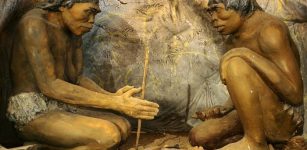 Early Humans Used Fire To Make Stone Tool – New Study
Archaeology | Oct 16, 2020
Early Humans Used Fire To Make Stone Tool – New Study
Archaeology | Oct 16, 2020 -
 Mischievous Irish Pooka, Shapeshifter And Prankster Has Its Counterparts
Featured Stories | Mar 15, 2018
Mischievous Irish Pooka, Shapeshifter And Prankster Has Its Counterparts
Featured Stories | Mar 15, 2018 -
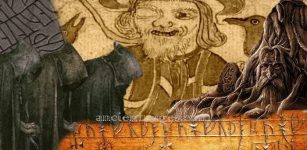 God Of The Gallows And How Odin Hanged Himself From Yggdrasil To Know Secrets Of Runes
Featured Stories | May 7, 2018
God Of The Gallows And How Odin Hanged Himself From Yggdrasil To Know Secrets Of Runes
Featured Stories | May 7, 2018 -
 On This Day In History: Peter The Great Defeats Charles XII Of Sweden At The Battle Of Poltava – On June 28, 1709
News | Jun 28, 2016
On This Day In History: Peter The Great Defeats Charles XII Of Sweden At The Battle Of Poltava – On June 28, 1709
News | Jun 28, 2016 -
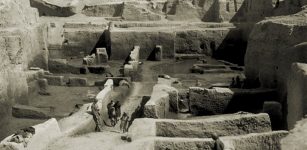 Iraq’s Ancient Kish City Survived The Great Flood – Today It’s Neglected And Lies Buried In Sand
Civilizations | Sep 24, 2015
Iraq’s Ancient Kish City Survived The Great Flood – Today It’s Neglected And Lies Buried In Sand
Civilizations | Sep 24, 2015 -
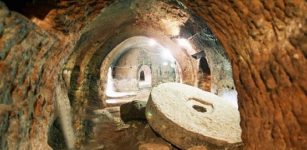 Underground Labyrinth With Secret Passages, Tunnels In Dobrogea Plateau, Romania
Featured Stories | May 9, 2022
Underground Labyrinth With Secret Passages, Tunnels In Dobrogea Plateau, Romania
Featured Stories | May 9, 2022 -
 Lost Mayan City Hidden Deep In The Peten Jungle Discovered By Expedition Team
Archaeology | Mar 21, 2022
Lost Mayan City Hidden Deep In The Peten Jungle Discovered By Expedition Team
Archaeology | Mar 21, 2022 -
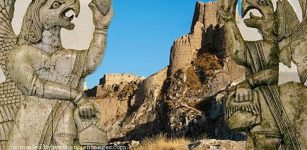 Ancient Settlement Inhabited By Urartian People – Unearthed
Archaeology | Oct 13, 2020
Ancient Settlement Inhabited By Urartian People – Unearthed
Archaeology | Oct 13, 2020 -
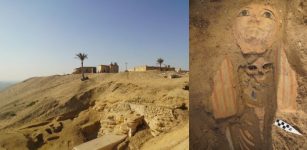 Ancient Egyptian Tombs With Stunning Trove Of Artifacts And Human Remains Unearthed In Saqqara
Archaeology | Jan 17, 2024
Ancient Egyptian Tombs With Stunning Trove Of Artifacts And Human Remains Unearthed In Saqqara
Archaeology | Jan 17, 2024 -
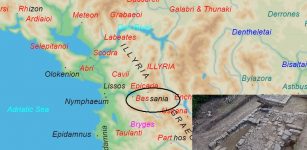 2,000-Year-Old Lost Illyrian City Unearthed In Albania By Polish Archaeologists
Archaeology | Jun 13, 2018
2,000-Year-Old Lost Illyrian City Unearthed In Albania By Polish Archaeologists
Archaeology | Jun 13, 2018


